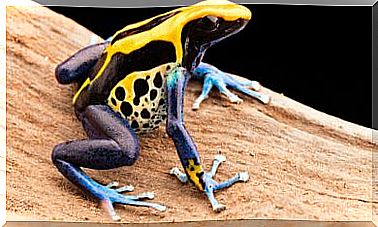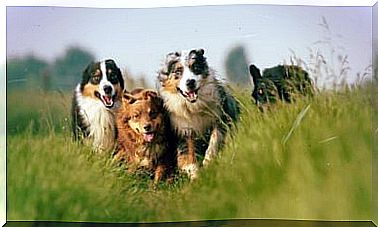Behavior Of Snakes
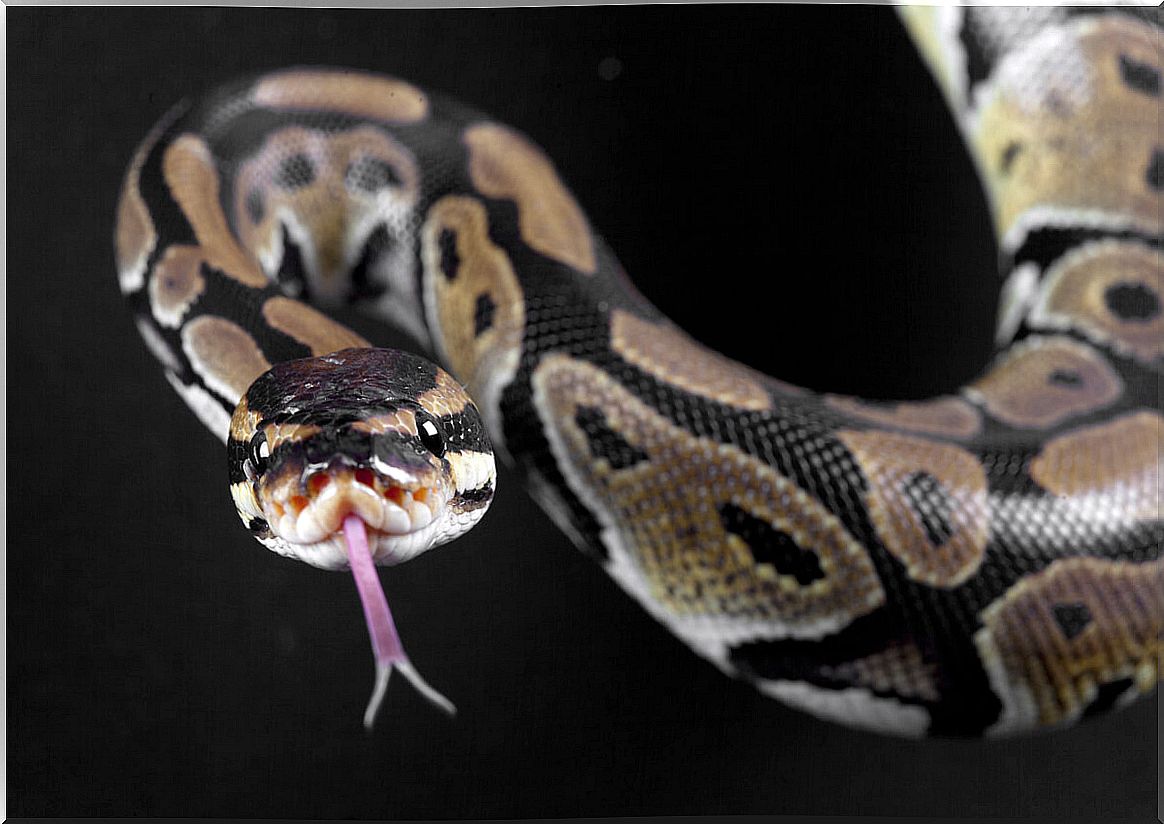
Snakes or snakes are a misunderstood group of reptiles, as they can cause both admiration and fear in equal measure. They are present on practically all continents and are fundamental within ecosystems, but does human being know everything about the behavior of snakes?
The behavior pattern in snakes is very complex, since it varies within each species and many behaviors have not yet been associated with a specific biological mechanism. Even so, everything that has been collected by the different herpetologists of the world suggests that snakes are much more intelligent than you can think. If you want to know more, keep reading.
Snake characteristics
Snakes are found within the Animalia Kingdom , which in turn is part of the Cordata phylum , in the Reptile class , superorder Squamata and order Ophidea . Currently 3496 species of snakes are known, of which only 375 are medically important for man because of their bite.
The main anatomical and physiological characteristic of snakes is that they lack limbs, a trait also known as apodia . They have elongated bodies that we can separate into the head, trunk and tail, although all these sections are covered by scales. Surprising as it may seem, there are species that still have traces of what were once the legs.
The skin is highly variable between different species. This organ has general functions that are shared and others specific to each one of them – like the rattlesnake of some snakes. In turn, the external tissue of the animal is made up of several layers: the first, very rich in keratin, is the one that molts.
The scales overlap each other and are often used to distinguish species from each other. On the other hand, the skin as a whole is an organ with multiple nerve endings, which provides snakes with great sensitivity and touch.
As for the trunk of snakes, it is formed by many vertebrae, from which a pair of ribs emerge. Regarding this topic, studies have been carried out that compared different species of snakes that lived in variable environments, with the intention of discovering if there was any difference in their skeleton with respect to the habitat.
It was found that no, that is, the species analyzed were practically the same from a morphological point of view. One of the possible explanations is that snakes change a lot of substrate – and even climate – and a versatile morphology ensures survival and evolutionary success. Therefore, all these animals must present an adaptable and common potential.
In reference to the head, there are clear differences between poisonous and constrictive snakes. Both have a jaw with bones that can be mobile or semi-fixed, with very flexible tendons and ligaments that allow them to open the jaw wide, to be able to ingest their prey.
The main difference is in the shape of the skull, flat and much more fragile in poisonous snakes than in constrictors. The former are more prone to cranial trauma, but they compensate with the venom that allows them to ingest the prey safely.
The teething of snakes
As for the teeth of snakes, we can classify them into several types:
- Aglyphs: these snakes have multiple teeth, which allow the prey to grasp. This characteristic is found, above all, in non-poisonous species.
- Opystoglyphs: they have their fangs and poisonous devices on the back of the maxilla and also have small teeth. Very few species in this group cause harm to man, which is why they are usually considered non-poisonous.
- Proteroglyphs : These snakes have 2 small fangs connected to the venom gland at the front of the jaw. When they bite, they usually do not release the prey immediately, since they need time to inoculate enough toxins.
- Solenoglyphs : they have 2 large anterior fangs connected to the venom glands. These fangs have a joint that allows solenoglyph snakes to move their teeth. They are the group with the most consequences for human health.
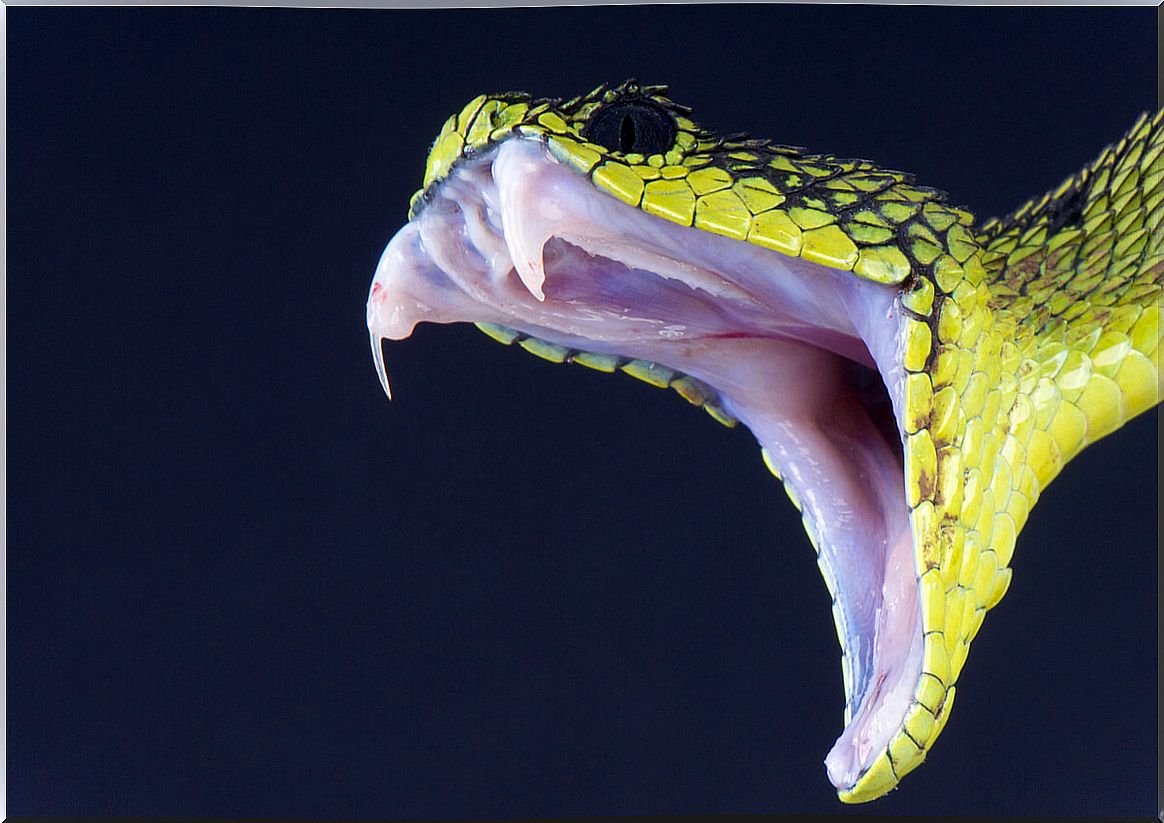
Character of snakes
Snakes are cold-blooded animals, so their character often depends on the ambient temperature. At low temperatures they hibernate, while during the rest of the year their activity will vary depending on the environment. Since they cannot generate enough heat to remain constant, they are completely dependent on ecosystem variables.
In addition, the character depends on each species and even differs between individuals, since there are snakes that can be more intrepid than others. Normally, they are calm animals that spend most of their time thermoregulating their temperature, something closely linked to the behavior of snakes.
When a snake is more aggressive or nervous, it increases its energy expenditure proportionally. These behaviors take place mainly when these animals hunt, defend the territory, it is the breeding season or in the fight against predators.
Snake communication
The communication of living beings is linked to the senses. In the case of snakes, the main senses to communicate with the environment and with other individuals would be the following:
- Sight : it depends a lot on the species in question, since some have a great visual system, while others are practically blind – such as burrowing snakes.
- Touch : snakes have a highly developed sense of touch, which allows them to know what substrate they are on, but also to feel the vibrations that are generated in the environment. With this, the snakes are able to detect prey and dangers.
- Smell : the smell of snakes is not like that of humans. This sense is linked to the forked tongue, responsible for collecting chemical information from the environment. These substances reach the Jacobson’s organ , present inside the mouth. Once the particles are captured, they provide the animal with information on both the characteristics of the environment and all the possible species present in it.
- Thermoreceptor pit : some snakes, especially poisonous ones, also have another organ capable of offering a thermal vision of the environment.
- Hearing : as for the sense of hearing, this is practically non-existent in snakes. Snakes are believed to be practically deaf, as they lack a middle ear.
Apart from this, snakes also communicate with other snakes or species through certain movements. Let’s see a little how these reptiles use body language.
Body language
The body language of snakes allows you to know their state of mind. The behavior of snakes that are calm is manifested mainly in the form of the absence of movement or with movements by crawling. On the other hand, when they feel attacked, they present a multitude of body movements that depend on each species.
In these cases, most of the species increase their volume – they swell, open the neck area, rise up – or generate some type of sound, trying to dissuade the possible danger. In case of attack, they present fast and precise movements and some even spit venom.
Behavior of snakes
The ethology of snakes is still very unknown. The behavior of these reptiles, as well as communication, varies greatly between species and is often difficult to study in nature itself, which is why most research has been carried out in captivity.
When you think of snakes, they are normally seen as solitary animals, with virtually no social relationships and no changes in behavior. This preconception is wrong, since it has been found that there are several species that interact with individuals of the same species and snakes that have modified their behavior due to climate change.
A study by Morgan Skinner showed that snakes of the species Thamnophis sirtalis sirtalis are able to recognize each other and choose those individuals with whom they have the best relationship. In addition, it was individually verified how bold the specimens were and that there were even variable traits between them.
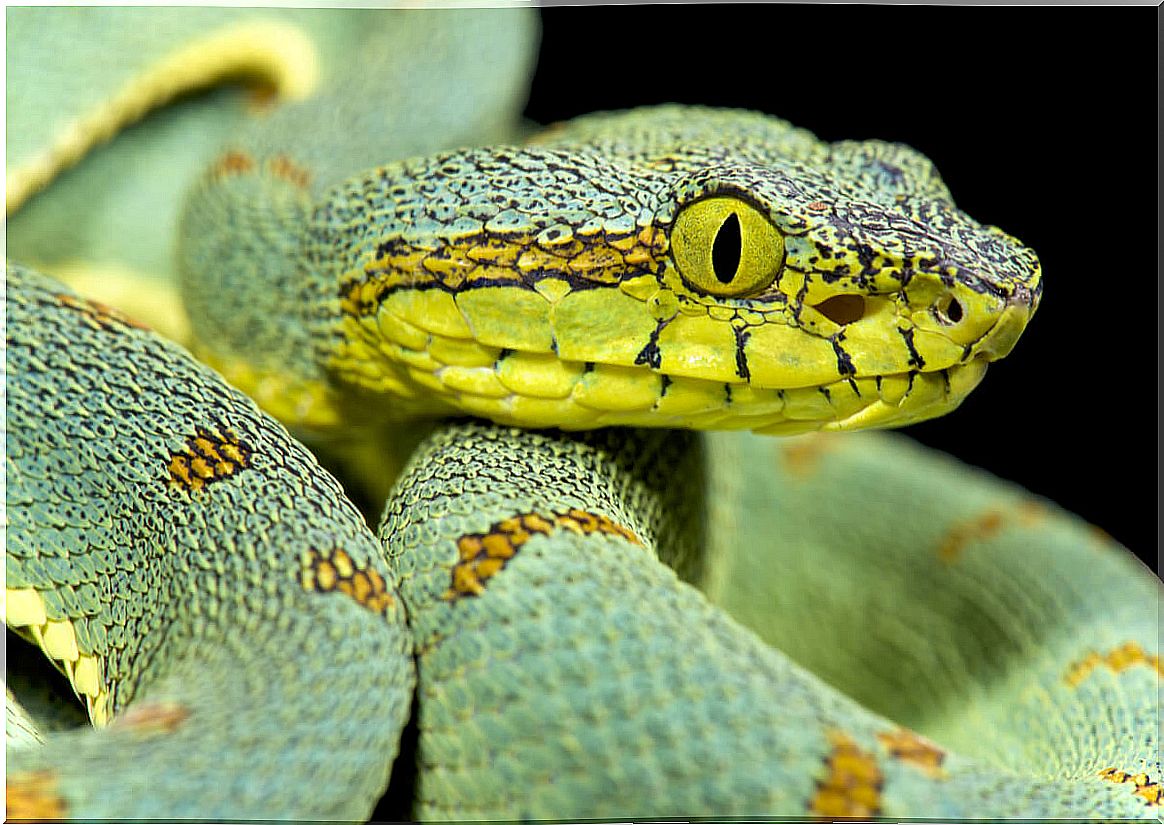
Courtship and mating
The behavior of snakes in the reproductive field is closely linked to pheromones and depends on the area and seasonality. Most of them are oviparous – they lay eggs – or ovoviviparous, that is, they keep the eggs inside and then the young are born from inside the mother.
The reproduction of snakes varies with each species. In some, males court females by vibrating, rubbing, and even biting. At the time of reproduction as such, hormonal language and sensory contact between male and female are key for reproduction – which can take hours – to finish correctly.
Some species are also characterized by fighting between males. In this case, the behavior of the snakes varies between fighting with the body raised and battles with the body curled up, an act that is accompanied by pushing. In exceptional cases, a dominant specimen can kill the rival male.
Females can cannibalize males to obtain nutrients. Others build nests to lay eggs and it has even been observed the defense of the nest area by both parents, in snakes such as the king cobra ( Ophiophagus hannah ).
Anti-predatory behavior
When a snake is in danger, its main impulse is to escape. They are not aggressive animals, they only defend themselves in those cases in which they are threatened and without escape. Still, these reptiles exhibit fascinating deterrent behaviors.
To show their danger, many snakes make loud sounds. Undoubtedly, one of the clearest representatives on this front are the rattlesnakes, belonging to the genus Crotalus .
These snakes make movements of the tail, thus shaking the bell that they have at their end – made up of horny cases – to achieve a shrill and threatening sound. Another example is that of the puffer viper ( Bitis arietans ), which also generates a loud sound when inhaling and exhaling air.
Perhaps the most curious behavior of snakes in terms of defense is that of spitting species. When threatened, these reptiles open their mouths and project a jet of venom, usually directed at the eyes and mouth of the aggressor. When it comes into contact with the predator, it can go blind and even die if eaten.
Another form of defense is body change, during which snakes try to appear larger. In these cases the snakes can swell, rise up and even in particular cases open a cap that they have on their neck.
Can you train a snake?
Snakes can be used to changing certain behaviors thanks to repetition and patience. When a snake is kept in captivity, it will not normally be aggressive, but otherwise it can be trained to stop being aggressive.
It is very important to maintain a regularity in these workouts. At first, it is recommended that different individuals can recognize us and not see us as a threat. To do this, they have to become familiar with the scent of the caretaker. Careful cleaning of the premises without handling the animal can help.
When you want to handle the snake, it is advisable to start with a hook – if they are always poisonous – keeping the animal’s head away from the body. The hook helps the snake not to mistake the guardian’s hand for food and little by little the animal will get used to the handling.
The enchantment of the serpents
You’ve surely seen snake charmers in documentaries. In the shows they carry out, snakes — usually king cobras — appear inside a basket that get up and begin to make movements symmetrical to that of the musical instrument ( Pungi ) played by the enchanter. They certainly seem hypnotized.
The techniques used to carry out this performance are very stressful and even deadly for the snakes that are used. To avoid risks, many of the enchanters extract the venom before starting the show and some even mutilate the snake by pulling out its fangs.
The training that cobras undergo consists of food deprivation and confusion. The snake mistakes the Pungi for a rival and detects the vibrations that the instrument generates. It rises to defend itself and attack if necessary. Enchanters stand at a safe distance that avoids being bitten in the event of an attack.
The world of snakes is fascinating and there is still much to know. Its conservation is very important for the proper functioning of ecosystems, so respecting and protecting all the snakes on the planet is necessary to preserve our environment.






